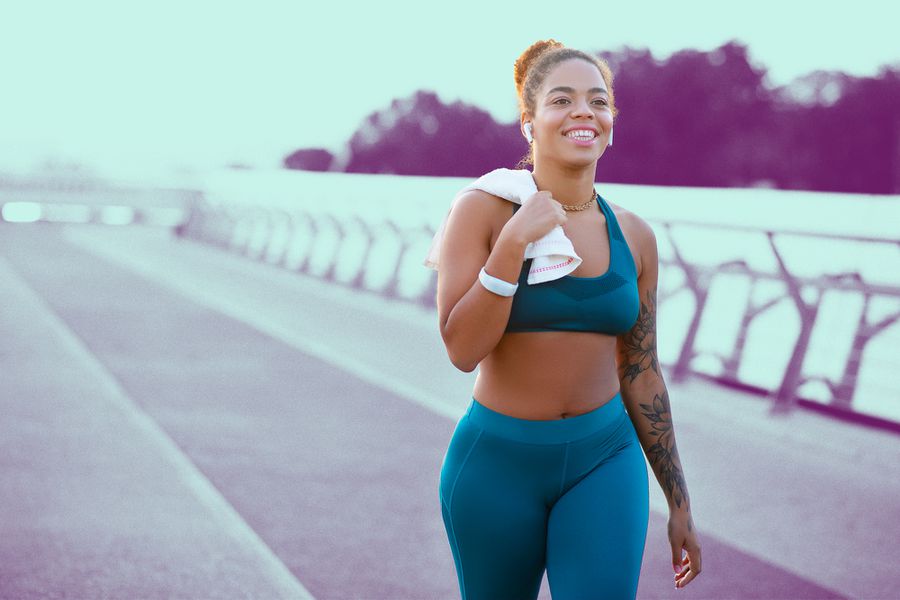
When you think of people tackling cardio workouts, the first image to come to mind might be of breathless athletes with flushed skin and sweat-drenched sports bras. You’re not mistaken — some cardio sessions can leave you huffing, puffing, and feeling as if your heart is about to burst out of your chest. But these dreadful effects aren’t a requirement to score the cardiovascular benefits the workout method has to offer.
LISS Cardio vs. HIIT
HIIT is essentially the polar opposite of LISS cardio. Since the training method involves alternating between bursts of vigorous activity and short rest periods, it utilizes your body’s anaerobic energy system — not your aerobic one like LISS cardio, says Gatlin. Refresher: During aerobic exercise, your body will utilize your stored carbs, protein, and fat, plus the oxygen you breathe, to make energy readily available to your muscles. Consequently, you can carry out the activity for prolonged periods of time, according to information published by Piedmont Healthcare. During anaerobic activity, on the other hand, your body will utilize just the energy that’s already stored in your muscles, so you can sustain the exercise only for short bursts of time, according to Piedmont Healthcare.
And each of these types of workouts has unique benefits. Aerobic exercise helps strengthen your slow-twitch muscle fibers, which contract slower and enable you to train for long periods of time before you start to feel fatigued. On the flip side, anaerobic exercise boosts the size and quantity of fast-twitch muscle fibers, which increases your muscle’s power and strength, according to the International Sports Sciences Association. Despite this distinction, experts say focusing on training specific fiber types isn’t necessary, as “the fibers just do what they need in order to make you more efficient at whatever training you’re doing,” Ian Elwood, M.A., A.T.C., C.S.C.S., C.F.-1, previously told Shape. All that’s to say neither workout is better for your body than the other — they’re simply different.
Still, drawn-out LISS cardio sessions may feel boring at times, challenging your focus and motivation, says Cennamano. And that’s where HIIT workouts, which often take less than 30 minutes, may have a leg up. “A reason why so many people prefer HIIT is not just because of the efficiency of the workout — [you can] achieve results [i.e. improved cardiovascular health] in less time — but the engaging and often unexpected element of it,” she adds. “Instructors and trainers have a lot more leverage with programming choices and can vary activity from session to session.” During each HIIT workout you tackle, you might spend 15 minutes powering through a handful of different plyometric exercises with short rest breaks in between. The result: a fitness routine that doesn’t go stale after just a few weeks.
The Best LISS Cardio Workouts
Ready to mix LISS cardio workouts into your routine and start scoring those perks? Try out some of the workout methods below. If it's too challenging to do a 30-minute workout right from the get-go, start off with a five-minute session, then increase it by a minute each week, says Gatlin. And remember to check in with your RPE throughout your session to ensure you're keeping your intensity at a level 5 or 6.






































